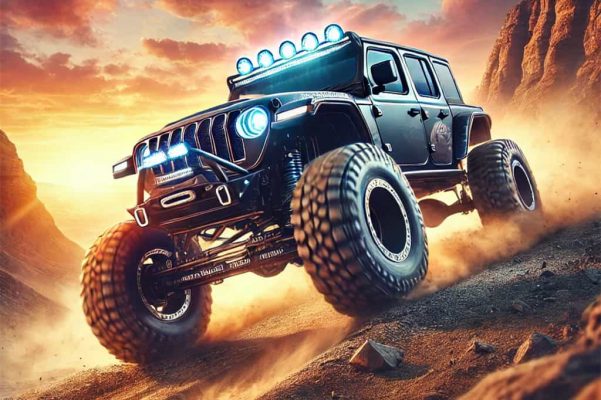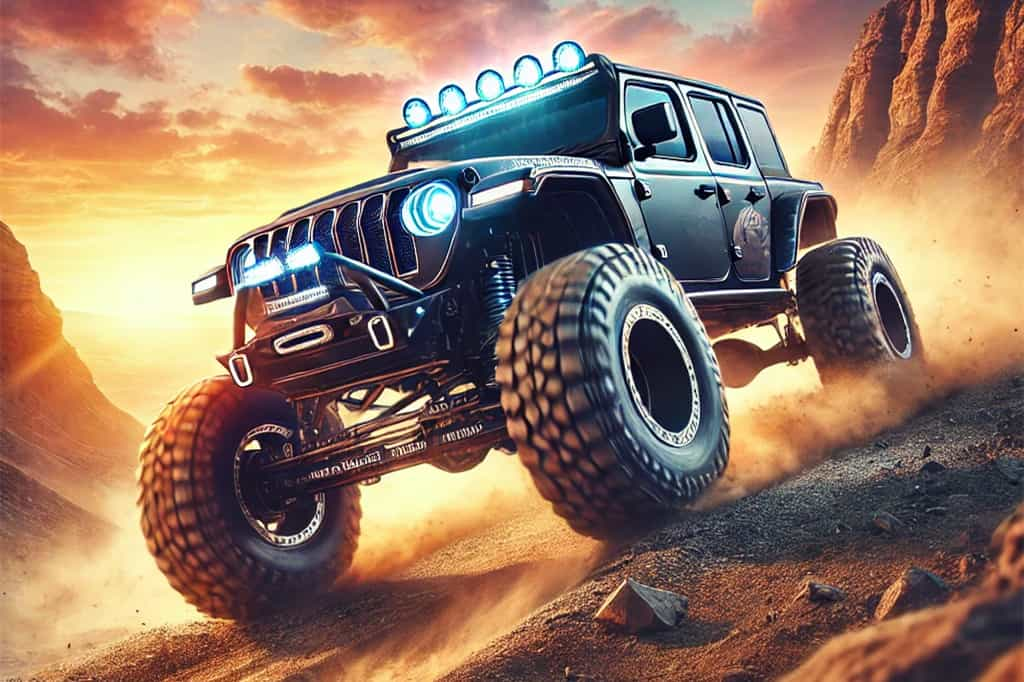At Konnra, we know that when you’re gearing up for an off-road adventure, the last thing you want to worry about is whether your wiring harness can handle the rough and tumble. That’s why we’re here to guide you through the essentials of choosing the right wiring harness for off-road use. This blog post is packed with tips on what to look for in a harness, from durability and connector quality to compatibility with your lighting and accessories. Whether you’re a seasoned off-roader or just getting started, Konnra has your back with products that keep your adventures running smoothly, no matter the terrain. Let’s dive in and help you find the perfect wiring solution for your next big journey!

Understanding the Basic Functions of a Wiring Harness
Before diving into the specifics, it’s important to understand what a wiring harness does and why it’s vital for off-road vehicles. A wiring harness is essentially the central nervous system of your vehicle’s electrical components. It connects and ensures the proper operation of various systems such as brake lights, turn signals, and auxiliary lighting. In off-road scenarios, where visibility and signaling are critical, a reliable wiring harness is essential.
In off-road environments, your vehicle’s electrical system is constantly exposed to rough conditions. Mud, water, dust, and vibrations can all take a toll on your wiring harness, potentially leading to system failures. This makes choosing the right harness a key factor in avoiding unexpected breakdowns and ensuring your safety on the trail.
Choosing the Right Wiring Harness Type
Wiring harnesses come in various configurations, typically categorized by the number of pins or wires they have. Understanding these types will help you select the right one for your specific needs.
1. Four-Pin Wiring Harness
The four-pin wiring harness is the most basic type, primarily used for small trailers and simple lighting systems. It supports essential functions such as tail lights, brake lights, and turn signals. For off-road enthusiasts towing a lightweight trailer with minimal electrical requirements, a four-pin harness might suffice.
2. Five-Pin Wiring Harness
The five-pin harness adds an extra wire for auxiliary power or reverse lights, making it more versatile than the four-pin version. This type is suitable for slightly more complex setups, such as trailers with additional lighting or a basic electric brake system.
3. Six-Pin Wiring Harness
A six-pin wiring harness is designed for trailers with electric brakes and additional auxiliary power requirements. In off-road situations, having electric brakes can be a significant advantage, especially when navigating steep inclines or rough terrain.
4. Seven-Pin Wiring Harness
The seven-pin wiring harness is the most comprehensive option, supporting all the functions of the previous types while adding a line for battery charging or more advanced braking systems. For serious off-roaders who need to tow heavy-duty trailers with sophisticated electrical systems, the seven-pin harness offers the most flexibility and capability.
Materials and Durability: What to Look For
Durability is a non-negotiable factor when selecting a wiring harness for off-road use. The materials used in both the wires and the outer casing of the harness play a critical role in its ability to withstand harsh conditions.
1. Wire Material: Copper vs. Aluminum
Wiring harnesses are typically made from copper or aluminum wires. Copper is the preferred material for off-road applications due to its superior conductivity and resistance to corrosion. Although more expensive, copper wiring ensures a stable electrical connection, even in wet or humid conditions. Aluminum, while lighter and cheaper, doesn’t perform as well in demanding environments and is more prone to corrosion.
2. Outer Casing: Plastic vs. Rubber
The outer casing of the wiring harness is your first line of defense against the elements. Rubber casings are generally more durable and better suited for off-road use compared to plastic ones. Rubber provides excellent resistance to water, dust, and abrasions, which are common in off-road conditions. A high-quality rubber casing will protect the internal wires from damage and ensure that the harness remains functional, even after prolonged exposure to harsh environments.
The Importance of Waterproof Connectors
In off-road environments, the connections between your wiring harness and the vehicle or trailer are often the weakest link. This is where waterproof connectors come into play. These connectors are designed to keep water, mud, and dust out of the electrical connections, ensuring that your system remains operational even in the most challenging conditions.
Waterproof connectors are typically sealed with rubber gaskets and are made from corrosion-resistant materials such as nickel-plated or zinc-coated metals. By choosing a wiring harness with high-quality waterproof connectors, you significantly reduce the risk of electrical failure due to moisture ingress, which is particularly important when crossing streams or driving in heavy rain.
Compatibility with Off-Road Lighting and Accessories
Off-road adventures often require additional lighting and accessories, such as LED light bars, winches, or auxiliary power outlets. Ensuring that your wiring harness is compatible with these accessories is essential for a seamless setup.
1. Lighting Compatibility
When adding off-road lighting, it’s important to select a wiring harness that can handle the additional power load. LED lights, in particular, are popular for off-roading due to their brightness and energy efficiency. Make sure your wiring harness can support the number and type of lights you plan to install.
2. Accessory Compatibility
In addition to lighting, you might want to power other accessories like an electric winch or a portable fridge. A well-designed wiring harness will have extra circuits or provisions for these additional accessories, allowing you to expand your setup without needing to install multiple harnesses.
Ease of Installation and Maintenance
Even the best wiring harness won’t be of much use if it’s difficult to install or maintain. Choosing a harness that’s easy to set up and service can save you a lot of headaches down the road.
1. Simplified Installation
Look for wiring harnesses that come with clear instructions and pre-labeled wires. Some harnesses are even designed with plug-and-play connectors, making the installation process straightforward, even for those with limited experience. Ensuring a proper and secure fitment will minimize the chances of loose connections or wires getting damaged during your off-road adventures.
2. Regular Maintenance Tips
Maintaining your wiring harness is key to its longevity, especially in off-road conditions. Regularly inspect the harness for signs of wear, such as frayed wires, damaged connectors, or worn-out casings. Clean any dirt or debris from the connectors and apply dielectric grease to prevent corrosion. By performing these simple maintenance tasks, you can keep your wiring harness in top condition and avoid unexpected electrical issues on the trail.
3. Tools and Tips for Maintenance
Having the right tools on hand can make maintenance easier. A multimeter is invaluable for checking electrical connections and ensuring everything is functioning properly. Additionally, carrying extra waterproof connectors, electrical tape, and wire cutters can help you quickly address any issues that arise during your off-road trips.
Conclusion
Choosing the right wiring harness for your off-road vehicle is all about balancing functionality, durability, and ease of use. By understanding the basic functions, selecting the appropriate type, and ensuring compatibility with your vehicle’s lighting and accessories, you can create a reliable electrical system that withstands the rigors of off-road adventures. Don’t forget the importance of waterproof connectors and regular maintenance to keep your wiring harness performing at its best. With the right setup, you can tackle any trail with confidence, knowing that your vehicle’s electrical system is ready for the challenge.










